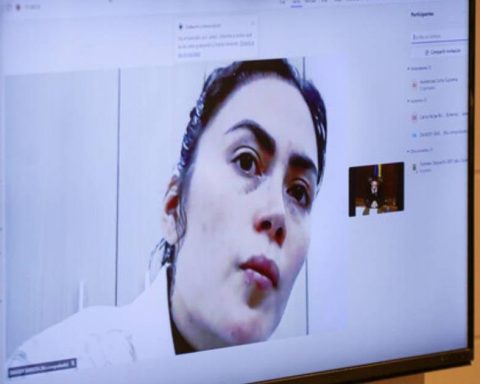He Smoking passive during the childhood leave a mark on the DNA of children and girls, which contributes to explaining the adverse effects on the healthaccording to a study which includes data from eight European countries (Spain, France, Greece, Lithuania, Norway, the Netherlands, the United Kingdom and Sweden).
This is the main conclusion of study Led by the Global Health Institute of Barcelona (ISGlobal), in Spain, which has been published in the Environment International magazine.
The researchers of study The need to reduce the exposure to the Smoking passiveespecially in children’s environments.
Specifically, they warn that “the exposure postnatal al smoke of the tobacco alter the methylation of the DNAwhich could contribute to explaining the adverse effects on the health“
They also ensure that children exposed to smoke of the tobacco at home they are more likely to show certain changes in the Epigenomawhich can alter the way in which genes are expressed.
These epigenetic alterations could influence the development of diseases In the future, Isglobal researchers argue.
He DNA It’s like a book by instructions For the body
He DNA works as a “book of instructions“For the body, and without changing the content of the” book “(that is, the gene sequence), the smoke of the tobacco You can add “marks” in certain pages.
These “brands” can affect the way in which these are read instructionsand one of these “brands”, the methylation of the DNAis one of the main epigenetic mechanisms that activate or disable gene expression.
Although it has long known that the effects of Smoking maternal In pregnancy they affect Epigenomathis research is one of the first to show how the exposure Passive to smoke of the tobacco in the childhood It can also have a harmful effect.
He study has included data from 2,695 children and girls from eight European countries (Spain, France, Greece, Lithuania, Norway, the Netherlands, the United Kingdom and Sweden), between 7 and 10 years of age who were volunteers from six cohorts of the consortium on epigenetics in pregnancy and Childhood (PACE).
From the blood samples of the participants, the scientific team studied the level of methylation In specific sites of the DNA Throughout the genome, and associated it with the number of smokers at home (0, 1, or 2 or more).
Changes were identified in the methylation of the DNA In 11 regions (called CPGS) associated with exposure to the Smoking passiveand most of these regions have also been related in previous studies to the exposure direct to tobacco in active smoking or during pregnancy.
In addition, six of them are associated with diseases such as asthma or cancer, for which tobacco It is a risk factor.
According to Marta Cosin-Tomàs, researcher at Isglobal and first author of the studythe research carried out that “the Smoking passive during the childhood leaves a mark at the molecular level, being able to modify the expression of genes that influence susceptibility to diseases In adulthood. “
Households are sources of exposure to the smoke
Despite the growing regulation of consumption of tobacco In public spaces, households remain one of the main sources of exposure to the smoke of the tobacco For the children.
In 2004, it was estimated that 40 % of the children worldwide were exposed to Smoking passivedespite the exposure Infant to this pollutant not only increases the risk of diseases Respiratory and cardiovascular, but can also affect neurological development and immune function.
Another of the researchers, Mariona Bustamente, argues that “the results obtained suggest that the Smoking passive in the childhood results in epigenetic changes similar to those observed with the exposure intrauterine al tobacco or active consumption “.
This proves “the urgency of implementing comprehensive measures to reduce the exposure Infant to smoke of the tobaccoboth at home and in other closed spaces. “
The principal researcher, Marta Cosin-Tomàs, concludes that “it is not about appealing to the individual responsibility of families” because “the exposure to the tobacco It is a problem of health public and hide a matter of social inequality. “
“Socio -economic and environmental factors, together with the persistent influence of powerful commercial interests, make it difficult to reduce exposure to the smoke of the tobacco In certain homes, “he emphasizes.















